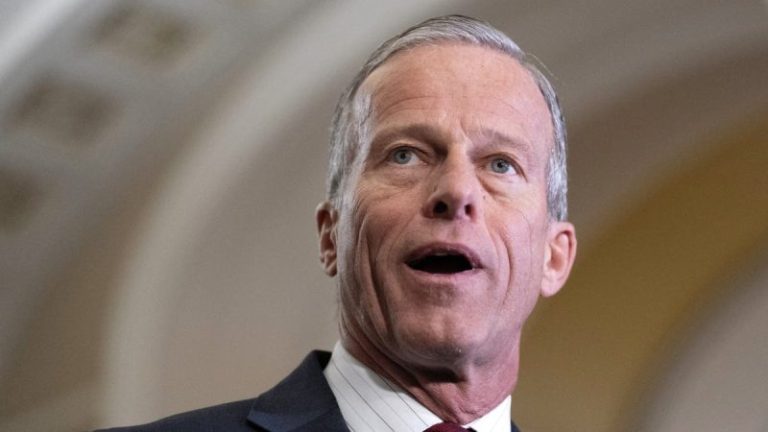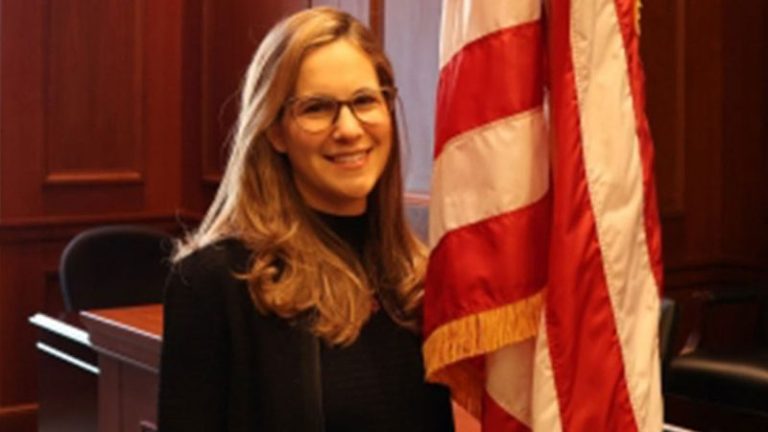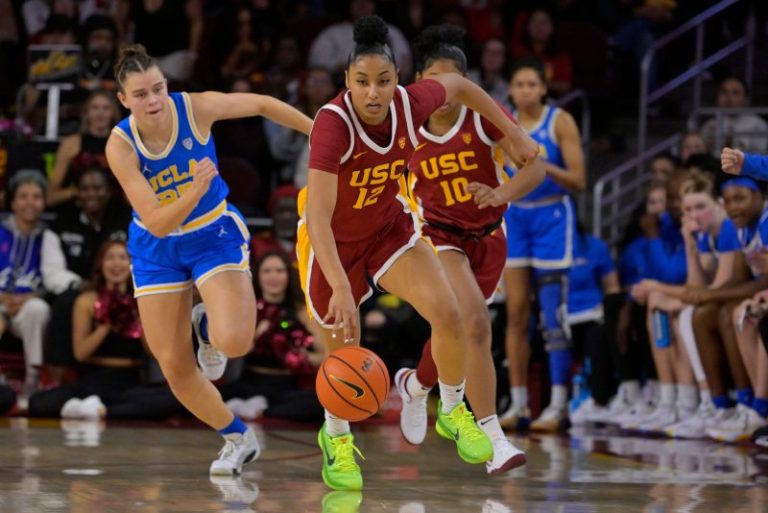LOS ANGELES — No undefeated teams remain in women’s college basketball.
JuJu Watkins had another signature performance and No. 6 Southern California played lights-out defense down the stretch to take down No. 1 UCLA 71-60, handing the rival Bruins their first loss of the season.
The hometown star had been in a shooting slump entering the night, but she drilled her first attempt – a 3-pointer – and it was her game after that. She finished with 38 points, 11 rebounds, five assists and a whopping eight blocks. She played a key defensive role in the fourth quarter as USC outscored UCLA 24-8 as the Galen Center crowd roared.
The Trojans win round one of the crosstown showdown. The two sides will play the second matchup at UCLA’s Pauley Pavilion in the regular-season finale on March 1.
USC vs. UCLA highlights
Final: USC 71, UCLA 60
Trojans pulling away
The home crowd is starting to feel it. USC continues to play incredible defense and the offense is getting to the hoop, leading 64-57 with three minutes to go.
USC retakes lead
The defensive intensity has picked up for USC and it now leads 53-52 with less than six minutes to go.
The Trojans haven’t let UCLA get anything easy and the Bruins are 0-for-8 from the field with three turnovers. Meanwhile, Watkins has picked it up once again, converting a fast-break attempt into a layup that gave the Trojans the lead, sending the crowd into a frenzy.
End of third quarter: UCLA 52, USC 47
A strong start to the third quarter gave UCLA the lead and it is out in front by five points heading into the final frame.
The Bruins started the third quarter with 10 consecutive points − propelled by Lauren Betts − for a seven point lead and the Trojans struggled to make much from the field. Despite only making one field goal, USC went 7-for-7 from the free throw line to prevent UCLA from breaking away.
USC’s JuJu Watkins has a game-high 30 points with six made 3-pointers. Betts leads UCLA with 18 points and 11 rebounds.
UCLA continues strong third quarter
USC has finally found the bucket in the third quarter but UCLA is still scoring, leading 49-43 with just under five minutes left in the frame.
UCLA’s Lauren Betts continues to take control of the quarter with nine points and four rebounds out of halftime. JuJu Watkins converted an and-one attempt to bump her scoring to a game-high 28 points.
UCLA storms out of halftime, takes lead
UCLA is carrying the momentum it had at the end of the first half into the second half. The Bruins started the third quarter on a 10-0 run to take a sudden 45-38 lead.
Star center Lauren Betts took command to start the run, scoring the first seven points down in the paint and at the free throw line. Guard Londynn Jones got open for a 3-point shot that forced USC coach Lindsay Gottlieb to call a timeout and the Bruins bench to erupt.
Halftime: USC 38, UCLA 35
We’ve got a game in Los Angeles.
UCLA used a late run in the second quarter to close the deficit. The Trojans lead by three halfway through Thursday’s contest.
UCLA was down by 13 points when it started making shots, going on a 14-1 run to tie the game with a minute left. However, JuJu Watkins drained another 3-point shot in the final minute to return the lead to the Trojans.
Watkins has shined and seemingly shaken off the shooting slump she was in entering the night. She has 25 points on 9-of-15 shooting, and she’s been nearly automatic from 3-point land at 6-for-7. UCLA star Lauren Betts leads the Bruins with nine points, drawing fouls to get to the charity stripe.
UCLA ties it
The Bruins aren’t letting USC run away with this one, tying the game at 35-35 thanks to a 14-1 run. UCLA has made its last four shots while USC has gone cold, with one shot made in its last 10 attempts.
JuJu Watkins continues to lead USC
It’s become the JuJu Watkins show. She has 21 of USC’s 34 points as the Trojans lead by 11 points halfway through the second quarter.
She’s been getting anything she wants, whether it’s been getting to the bucket or pulling up from 3-point land. She is 8-for-12 from the field and an astounding 5-for-6 from 3.
End of first: USC 24, UCLA 15
A buzzer-beating circus shot from USC’s Talia von Oelhoffen summed up what was a dominant first quarter for the Trojans, who lead the No. 1 team in the country by nine points at the end of the first 10 minutes.
USC has simply been knocking down shots, and UCLA has not. The Trojans are 8-for-15 (53.3%) from the field, with four of those shots from beyond the arc. Meanwhile, the Bruins are 5-for-16 (31.1%) and only 1-for-7 from 3-point land. USC’s JuJu Watkins has a game-high 11 points.
USC jumps out to double-digit lead
The Trojans are on fire, going on a 14-2 run to take a 20-10 lead with two minutes left in the first quarter, forcing UCLA to take a timeout.
USC is making shots, with six of its last eight attempts going in.
JuJu Watkins’ strong start gives USC early lead
The stars have come to play in Los Angeles, with JuJu Watkins off to a hot start in Thursday’s contest. USC leads 11-8 with four and a half minutes to go in the first quarter.
Watkins has eight of those points, including two 3-point shots that have the Galen Center crowd rocking early. UCLA has gotten to the foul line and is 4-for-4 from the charity stripe, but just 2-for-6 from the field.
When is UCLA vs. USC women’s basketball game?
The game is scheduled to begin at 10 p.m. ET on Thursday, Feb. 13.
How to watch UCLA vs. USC
Date: Thursday, Feb. 13
Time: 10 p.m. ET
Streaming: Peacock
What channel is UCLA vs. USC women’s basketball game on?
USC and UCLA’s matchup on Thursday will be streamed exclusively on Peacock, NBC’s subscription streaming service.
UCLA starting lineup
Kiki Rice, G
Londynn Jones, G
Gabriela Jaquez, F
Angela Dugalic, F
Lauren Betts, C
USC starting lineup
Kennedy Smith, G
JuJu Watkins, G
Talia von Oelhoffen, G
Rayah Marshall, F
Kiki Iriafen, F
USC vs. UCLA women’s basketball betting odds
Odds according to BetMGM
Spread: UCLA (-1.5)
Moneyline: UCLA (-115); USC (-105)
Over/under: 139.5
UCLA resume
Record: 23-0
NET ranking: No. 5
Quad 1 record: 7-0
Quality wins: No. 4 South Carolina, Baylor, No. 15 Maryland, No. 8 Ohio State
Losses: None
USC resume
Record: 21-2
NET ranking: No. 6
Quad 1 record: 6-2
Quality wins: Mississippi, No. 7 Connecticut, No. 15 Maryland, No. 8 Ohio State
Losses: No. 2 Notre Dame, Iowa
Spotlight shines on Los Angeles with UCLA-USC
In January 2022, Cori Close and UCLA visited Lindsay Gottlieb and Southern California at the Galen Center in a matchup between middling crosstown rivals. The attendance in that game was 1,982 people in the 10,258 capacity arena.
Three years later, it’ll be hard to find an empty seat in Los Angeles.
A sold out crowd will be on hand to watch two of the best teams in the country finally meet Thursday night when top ranked and undefeated UCLA visits No. 6 USC in one of the biggest matchups in women’s college basketball.
“It’s great for LA,” Gottlieb said. “The energy is gonna be off the charts.”
– Read more about the matchup here.
Lauren Betts: ‘Most unique player in college basketball’
UCLA women’s basketball is having its best season in program history, and it’s all thanks to a center dominating the paint.
Lauren Betts was a top-ranked recruit out of Aurora, Colorado, who committed to join a highly-stacked Stanford team under Hall of Fame coach Tara VanDerveer, adding a potential star to one of the best frontcourts in the country.
However, Betts didn’t spend much time on the court. Her confidence was affected and it didn’t feel like a good fit. She entered the transfer portal after one season at Stanford. UCLA pushed hard to make her a Bruin, feeling like she could help the team take that next step toward a championship.
Now, in her second season at UCLA, Betts is elevating the Bruins and the team is eyeing its first Final Four berth. If Betts keeps up her standout play, there won’t be anything stopping UCLA from reaching Tampa.
– Read more about Betts here.
The other USC star: Meet Kiki Iriafen
When JuJu Watkins decided to play for Southern California, part of the appeal was bringing glory back to her hometown. The banners from USC’s 1983 and 1984 championships have stood together for decades … without much expectation of adding a third one.
For as talented as she is – setting numerous freshman records in 2023-24 and guiding the Trojans to their first Elite Eight in 30 years – Watkins could only shoulder so much of the burden. While she commanded the backcourt and had a solidified post presence in Rayah Marshall, another star could have really elevated the team.
Luckily, Watkins has made USC the place to be, and another star joined the fold when Kiki Iriafen returned to her roots. She’s helped make the Trojans one of the championship favorites.
– Read more about Iriafen here.
This post appeared first on USA TODAY










